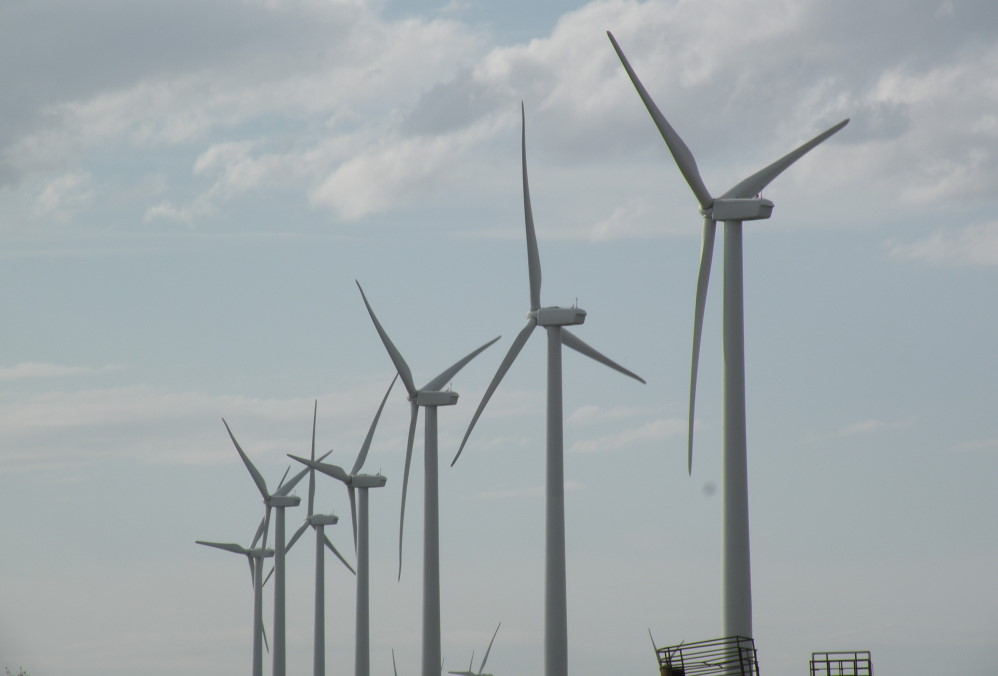
Agricultural News
Bird Collisions with Wind Turbines Studied by OSU Researchers
Tue, 19 Nov 2013 16:34:35 CST
 A little birdie told me to watch out for wind turbines, but he forgot to tell his buddies.
A little birdie told me to watch out for wind turbines, but he forgot to tell his buddies.
As wind energy continues to emerge as a green energy alternative to fossil fuels, bird mortality from collisions with the turbines also is on the rise. Previous research suggests anywhere between 10,000 and nearly 600,000 fatalbird collisions occur in the lower 48 of the United States each year.
Most of these previous estimates are based on extrapolation of data from a small number of U.S. wind facilities to all U.S. wind turbines. However, researchers in Oklahoma State University's Department of Natural Resource Ecology and Management (NREM) recently shed a little more light on the subject, by reviewing studies and industry reports from 59 different wind power facilities across the U.S. Their findings were published in "Biological Conservation," an international leading journal in the discipline.
"We estimate between 140,000 and 328,000 (mean = 234,000) birds are killed annually by collisions with monopole turbines in the contiguous U.S.," said Scott Loss, NREM assistant professor. "We found support for an increase in mortality with increasing turbine height and support for differing mortality rates among regions, with per turbine mortality lowest in the Great Plains."
This study evaluates only the newer monopole-style turbines and discounts the older lattice-style turbines, which are largely decommissioned in the U.S. It is often argued that the more modern turbines kill relatively few birds compared to the decommissioned turbines; however, thisstudy suggests bird collision mortality rates at new generation monopole turbines can still be considerable. The team found, across the U.S., anywhere from roughly 2.9 to nearly 8 birds are killed per turbine each year.
"Turbine height was a strong predictor of mortality rate," he said. "We did see some regional differences as well."
Turbines measuring from 36 meters up to 80 meters in height, from base to hub of the blades, were used in this study. Loss said the annual per turbine mortality rates on an annual basis increase approximately 10 fold from the shortest to the tallest turbines.
Recent research indicates larger turbines may provide more efficient energy generation, and there is a move toward installing taller and taller turbines.
"Our finding of increased turbine height being related to increased bird mortality is a cause for concern," he said. "Bird mortality rates should be taken into consideration, in addition to energy efficiency considerations, when evaluating the greenness of different turbine types."
The future may hold a larger cause for concern for birds as the U.S. Department of Energy has set a goal for 20 percent of the country's electricity to be produced by wind by 2030. As more, and presumably bigger, wind turbines areintroduced to the landscape, Loss estimates the mean total annual bird mortality to be roughly 1.4 million across the number of turbines needed to meet the DOE's goal.
"To minimize bird mortality, we should be conducting thorough risk assessments before placing wind turbines. This process includes takinginto account which bird species are present and where the individual turbines will be located" he said.
Wind facilities in the Great Plains usually have widely-spaced turbines in open areas. Wind facilities in California and along the East Coast are often along mountain ridgelines, which can be hotspots for migrating birds. These local differences in topography and turbine arrangement likely contribute to the observed regional differences in in bird mortality rates.
Article Source- OSU Division of Ag- Sean Hubbard.
WebReadyTM Powered by WireReady® NSI
Top Agricultural News
More Headlines...



















